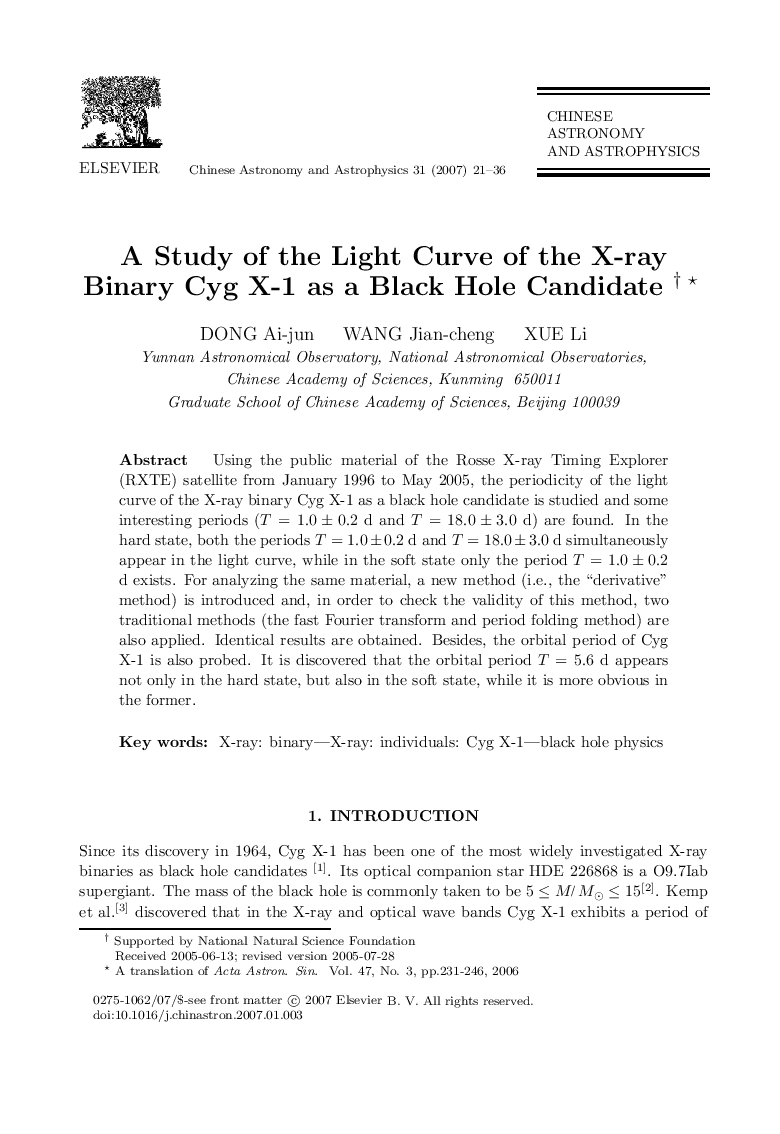| Article ID | Journal | Published Year | Pages | File Type |
|---|---|---|---|---|
| 1772116 | Chinese Astronomy and Astrophysics | 2007 | 16 Pages |
Using the public material of the Rosse X-ray Timing Explorer (RXTE) satellite from January 1996 to May 2005, the periodicity of the light curve of the X-ray binary Cyg X-1 as a black hole candidate is studied and some interesting periods (T = 1.0 ± 0.2 d and T = 18.0 ± 3.0 d) are found. In the hard state, both the periods T = 1.0 ± 0.2 d and T = 18.0 ± 3.0 d simultaneously appear in the light curve, while in the soft state only the period T = 1.0 ± 0.2 d exists. For analyzing the same material, a new method (i.e., the “derivative” method) is introduced and, in order to check the validity of this method, two traditional methods (the fast Fourier transform and period folding method) are also applied. Identical results are obtained. Besides, the orbital period of Cyg X-1 is also probed. It is discovered that the orbital period T = 5.6 d appears not only in the hard state, but also in the soft state, while it is more obvious in the former.
